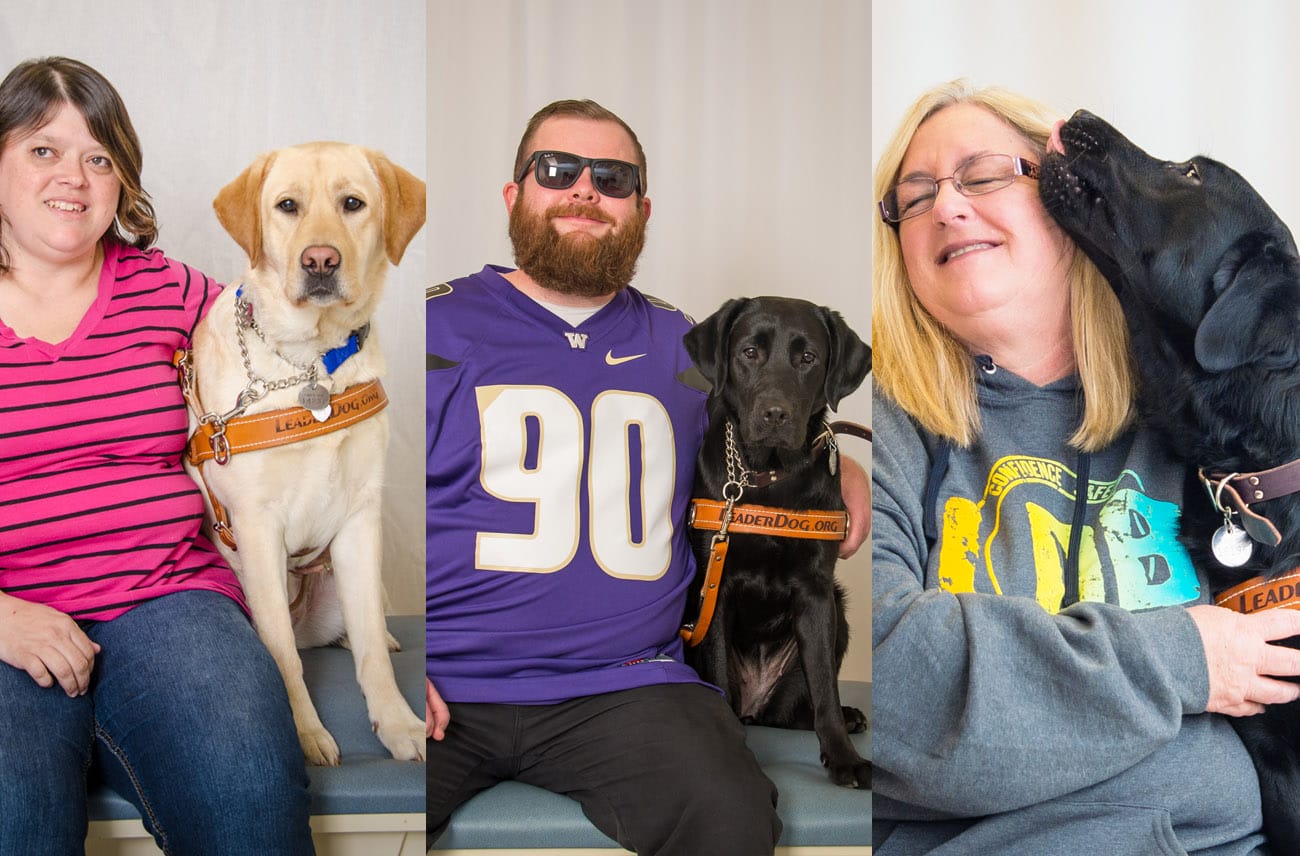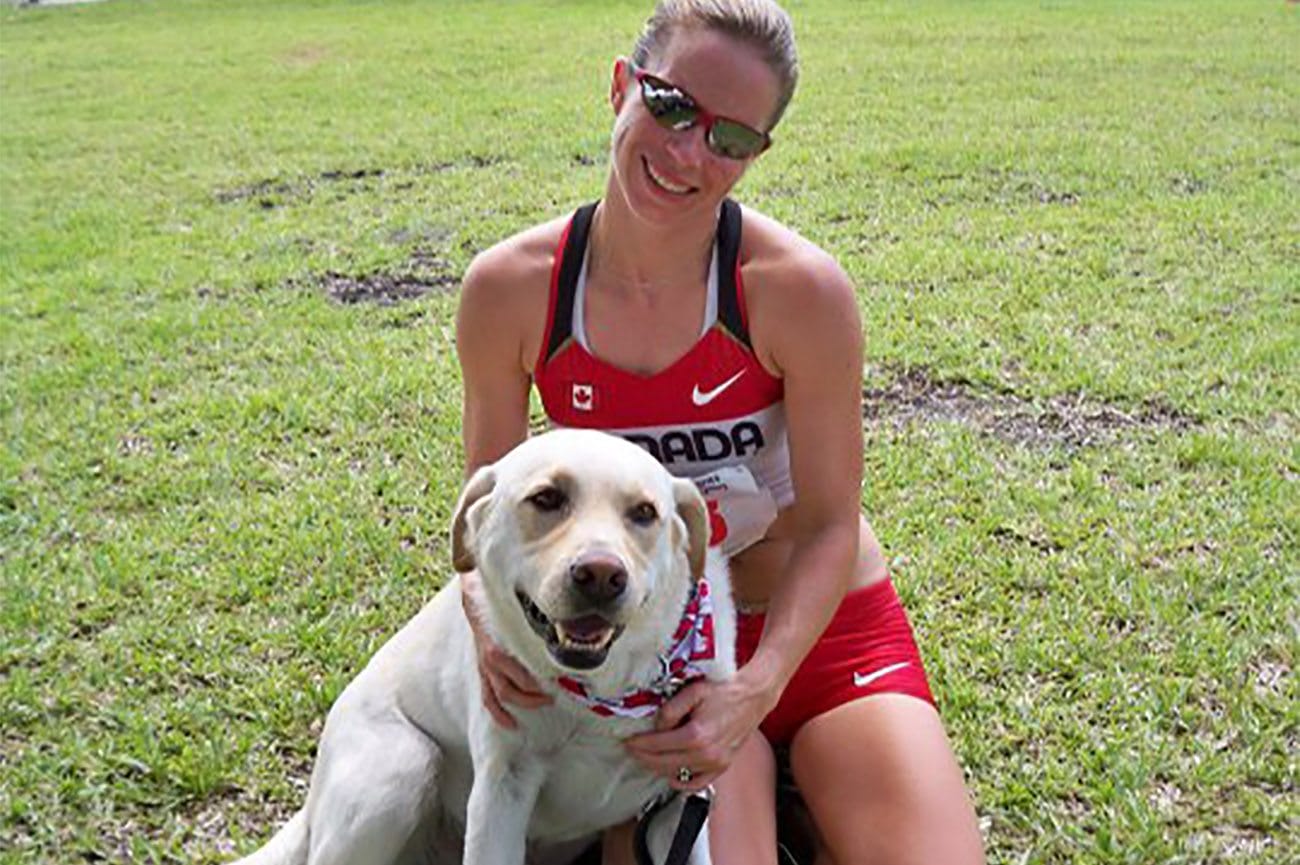Day One
I have reached status in my life. Through the blessings of my work with Leader, I have attained… Silver Medallion status (insert dramatic music here). Among the plethora of perks of a Silver Medallion member, I am afforded the opportunity to check one bag for free. This is a big one, folks. I now get to have my pocketknife with me on my trips! I’ve carried a pocketknife since my father gave me my first one, and when I don’t have one in my pocket, I feel incomplete. “How much do you use your pocketknife, Barry?” you may ask. Well, I used it the very night I got to Warner Robbins. Indeed, I did. I stopped at Publix, a favorite grocery store of mine in the southeast corner of our great country. If you’ve read my blog before (Mom, Amy, Christina, and Leslie, I’m talking about y’all) you know I really like Publix. I picked up my favorite Scottish breakfast tea and my favorite taralli (Flora is my favorite brand. There was a bakery in a grocery store in Morristown, New Jersey that made them on site, and those were my all-time favorite. I haven’t been to Morristown in years, so I couldn’t even tell you if the bakery is still making their own taralli or not. I sure hope so) and checked into the hotel. When I was ready for my evening tea, I used the pocketknife to open the box without tearing it. You weren’t sure I was gonna get back to the pocketknife, did ya? Boom.
Another perk of standing in line to check your bag is that you meet people you wouldn’t normally meet. So there I was, standing in line, very close to questioning my actual need for a pocketknife because the line isn’t moving when someone taps me on the shoulder and asks “What do you do for Leader Dog?” I came out of my daze and met Alyssa Otis’ Aunt Marsha. Alyssa is an Outreach Specialist at Leader, and was/is a GDMI (Guide Dog Mobility Instructor) for quite some time before that. Aunt Marsha told me all about Alyssa and how she’s destined to run the company some day soon. If you know Alyssa, you’ll agree that Aunt Marsha is on to something. We’ve got a lot of movers and shakers at Leader and Alyssa is at the head of the pack. (See what I did there? Head of the pack? It’s a play on words, you know. Because she was a GDMI, and dogs are pack animals? This writing stuff just gets easier and easier. This must be what Hemmingway felt like when he was on a roll).
Day Two
Christina Hepner, our Digital Marketing Manager, says that my blog is “great”. I remain a little dubious of the fact that anyone would think this is great. Forget the Hemmingway reference in the last paragraph. Christina and I have recently entered the friend circle, so I feel comfortable questioning her motives. But, she is the Digital Marketing Manager, and probably doesn’t want mindless tripe displayed on the website, so maybe she’s telling me the truth. Leslie Hoskins, our Outreach Services and Community Engagement Manager, shares an office with Christina and honestly believes that Christina is being very truthful. Officemates would know that. They also are two of the three hosts of our fantastic podcast “Taking the Lead” (available where every you access podcasts, and on our website) and podcast co-hosts know each other pretty well, right? By the way, if you’re not listening to the podcast, you’re really missing out. They interview clients, staff, volunteers, family, professionals in the vision field, etc. I rank it right up there with Joe Rogan and Mike Rowe. Good stuff. Join them next week as they “dive into the world of blindness.”
I’m here in Warner Robbins, Georgia to work with Fred, a two-time Leader Dog graduate who I had the fortune to meet while I was on campus back in October. Fred is an Air Force veteran and ended up in Warner Robbins because of the base here, Robbins Air Force Base. My uncle Terry was stationed here back here in the 80’s and my family drove to Georgia for a vacation one summer to visit. When we pulled up in their driveway, my father, also an Air Force veteran, said “We just drove 800 miles, and half of them were backing up.” We stopped at every Civil War battlefield and Stuckey’s on the way there. Dad always got one of those peanut logs. You remember them? They were an unnatural color. I wouldn’t touch them. As a father, I understand his strategy now. If you eat stuff of unnatural colors, no one asks for a bite more than once. He also ate pickle loaf and drank vinegar straight from the jug. Uncle Terry was an air traffic controller, Kentucky Wildcat fan, and otherwise renaissance man who married my Aunt Shirley, Mom’s youngest sister. Everybody got that straight? OK, then, back to Fred. Fred has a “new” Leader Dog and wanted to make sure his cane skills were still up to par on the occasions when he goes out without his dog. We spent the day in his neighborhood and in and around his church and he and I both feel pretty good about his ability to travel safely with his cane. I may even cut our visit short and move on to my next client, who might benefit from another day or two of instruction.
Day Three
Moving day. Fred and I discussed it and mutually agreed that he didn’t need any more of me. I will miss discussing sports and books with him. He’s an avid reader and sports fan, as am I, and I left Warner Robbins with several new book suggestions. I’m headed to Valdosta, GA, right about 2 hours south of where I stayed last night. It was a fairly uneventful trip except as I rounded a long curve, rising like a phoenix, up from the dust of the desert, I saw a Buc-ee’s! I’ve written about Buc-ee’s before: the sea of gas pumps, their immaculate and cavernous bathrooms, the Wall of Jerky. I needed nothing there, but left with a poke full of snacks for the road. Fully stocked, I finished up my drive to Valdosta and checked into the hotel. I did a little route scouting, but it was overcast and rainy, so the light left me earlier than normally at this time of year. I scouted one more route to a local hamburger and called it a night.
Day Four
I’m here in Valdosta to work with Noretta, a young lady who has had vision trouble for over 20 years and has had even worse trouble getting consistent Orientation and Mobility (O&M) services. One of the great benefits of the O&M program at Leader is the opportunity to practice your O&M skills on a daily basis, 3-5 days in a row. I was a high school football player. A pretty good one. In fact, the older I get, the better I was. By the time I’m finished talking about it, I’ll probably make the Hall of Fame. Anyway, the thing that has always worked best for me in football and any learning activity is repetition. And since Leader works with older teens and adults, I get to work with people who understand the concept of repetition and practice. Repetition and practice. Repetition and practice. (See what I did there)? If I can get you to practice say, ascending and descending stair technique 5, 10, 15 times in a row, I would bet I could get you to do it pretty consistently and with quite a bit of confidence. If I tried that same technique with a Jr. High student, they’d find me duct taped to the sink in the janitor’s closet at the end of the school day. But adults understand the need and benefit of practice. Noretta and I met at her apartment and went to her church where she attends on a regular basis. She wanted to feel more comfortable traveling there. She’s pretty comfortable inside the church, but where she needs more work is in trusting that the cane is going to give her the information that she needs to travel independently and confidently. Her vision fluctuates depending on the lighting source and it can take sometimes up to a minute for her eyes to adjust to different lighting sources. Because she doesn’t fully trust the information that the cane will provide her, she slows down and/or stops until her eyes adjust. This is not only inconvenient, but it’s also a very inefficient way to travel. Developing trust in the cane will allow her, eventually, to continue her pace regardless of the lighting conditions. But the only way to gain that trust is to practice. So tomorrow, that’s exactly what we’re going to do. I might need to check and see if Noretta has any duct tape before we do.
I ate at a place called Big Nick’s Soul Food. Nick has a contract with Valdosta State University, the Blazers, to provide food at all the sporting events here. I’m not sure how successful Blazer athletics is lately, but if the food at the concession stand is even close to the food at the restaurant, I’m really sure that the fans are happy.
Day Five
Because Noretta works, I have the luxury of not starting at the crack of dawn on this trip. Have you ever wondered where that phrase came from? “The crack of dawn” People don’t ever say “the crack of dusk”, do they? Why does dawn get the crack, but not dusk? These are the kinds of things that I ponder while not getting up at the crack of dawn, which is a great reinforcer to actually getting up anyway. The hotel has a nice fitness area, so I went downstairs to attempt to work off at least some of Big Nick’s fried pork chops, cheesy grits, and collard greens. I’m sure I wasn’t completely successful, but I didn’t do any harm, either.
I met Noretta after work and we found a straight, long sidewalk with very few street crossings on which we could get all the practice we needed to begin building trust. I had given Noretta a new cane tip, a jumbo roller tip, that may help with the cane tip not stick in too many of the sidewalk deviations and keep her moving more consistently.
I use the term “sidewalk deviations”, not “crack”, for multiple reasons, but the main one is one of my all-time favorite O&M stories. A student at Stephen F. Austin’s O&M program years ago was running a route on campus in which she was supposed to follow a seam between two sections of sidewalk with her cane in order to get across and open space using a technique called touch and drag. It it performed exactly how it sounds: touching the cane on one side of the arc and dragging to the other side, looking to find a seam to follow. Ella, my student at the time, was having a really hard time locating the seam, which is not uncommon. So it’s class change time on campus, and really close to noon, so lots of pedestrian traffic around us, and Ella is getting more and more frustrated by not being able to get the technique right. Eventually the frustration boiled over and Ella told everyone within earshot that she wanted to know what it felt like to put her cane in her crack just one time. She repeated this wish in every form possible, with minor variations, multiple times. Loudly. Her student teacher and I knew what she was talking about and understood her frustrations, having experienced the same route in our time under blindfold. However, the sea of unwashed masses surrounding us did not. Very funny. Now, to be fair to Ella, she was pledging a sorority during the same semester and very seldom came to class with even close to enough sleep to handle anything out of the ordinary. Still one of my favorites, Ella is now working for the VA in Alabama and probably getting ready to run the whole thing. She’s a good one.
So, back to Noretta, who enjoyed the larger circumference ball tip, but found it heavy compared to her old one. This is typical, but something she’ll get used to over time. She did really well, kept her head up and her cane swinging for a long time without me having to remind her to do it. I use three basic rules in teaching cane techniques:
1. If you’re moving, the cane should be moving as wide as your body, every step you take.
2. Hold your head up.
3. Don’t get in a hurry.
You may wonder why holding your head up is important if you don’t have any vision or even limited vision. Simply put, your ability to keep your balance and walk a straight line is tied to your vestibular system. It’s hard to walk a straight line or keep your balance with your head down. Try it some time, it’s not easy.
After dropping Noretta off, I went to eat at a place next door to Big Nick’s called Relish. Its’ a build-your-own burger type of place, and it was good, but they tasted just like Saturday night at the Bill Stafford house, which makes it my favorite burger place ever. Almost every Saturday night at my mom and dad’s place growing up, Dad would cook hamburgers on the grill on the back porch and Mom would make french fries and we’d eat in the living room with TV trays and watch Mutual of Omaha’s Wild Kingdom and Mod Squad. It was a big deal to eat anywhere except the kitchen table, and my brother and I just loved Wild Kingdom and Mod Squad. Do y’all remember either one of those shows? Wild Kingdom was my personal favorite. Marlin Perkins would be sitting in an easy chair, dressed in safari gear, cool drink in his hand, telling us about the beautiful yet dangerous places in the world, while Jim was getting death-rolled by an alligator or stalked by a lion or trampled by a stampeding herd of wildebeests. Anyway, one night in the middle of the week, Dad decided to cook hamburgers. Woo Hoo! TV trays and Wild Kingdom. Except it wasn’t. We ate our hamburgers at the kitchen table, like every other night. I remember literally crying because I just knew that we were missing Wild Kingdom, and how could my mother and father be so cruel as to not let me watch it? I gotta tell you though, I haven’t had a Bill Stafford-cooked hamburger since October 1996, and I’d trade every episode of Wild Kingdom I ever saw to have just one more with Mom, Dad, and Roger around our little kitchen table.
Day 6
My early morning ponderances, and my double burger at Relish, drove me into the fitness room this morning, and I had it to myself, which is a first on this trip. It’s a nice fitness room for a hotel and I got through my workout without having a heart attack. I do wonder though, most fitness areas you go into have mirrors all over the place. Isn’t the main reason we work out because we don’t like the way we look in the mirror? Why do I want to watch myself do shoulder presses in the mirror? I’m not filming myself and uploading it to social media, so why all the mirrors?
I picked up Norretta and we did some store work today. I’ve blogged about doing store work before, so I won’t bore you, but I did learn something new from Noretta. We went to Publix (my favorite, if you haven’t been paying attention) and she got a Pub sub to go, after we were finished. She took a loaf of fresh French bread from the bakery and handed it to the Pub sub specialist and they made her sandwich with the bread she gave them. Did you know this was a thing? How do people find these things out? My mind is blown. And edified.
This being our last day of training, I gave Noretta homework of getting out every day and practicing her new skills in order to help increase her confidence. I also encouraged her to come to Leader for a week-long O&M course. I highly encourage anyone who needs mobility training to attend our week-long course 1. For the consistency and repetition and 2. For the community that it always built between classmates. It is so fulfilling for our clients, getting to meet other people who are not necessarily in the same boat, as the saying goes, but they’re at least in the same water. Everyone who lives life with a visual impairment has struggles, and if you get multiple people with visual impairments together, almost every time, someone in the group has been there and done that, and knows a way over, under, or through the same struggle that someone else is going through. Community is so important, and you get that at Leader.
Day 7
I’m flying out of Tallahassee this morning because it’s a whole lot closer to Valdosta than Atlanta. A lovely morning drive through the low country and I’m at my gate with plenty of time to spare. A couple of firsts today: 1. I tried to board the wrong plane. To be fair to me, I had just come out of the restroom and they were calling for my group to board and I jumped in line and scanned my boarding pass. It turned red instead of green. Scan again. Red. The gentleman helping me says to let him see my boarding pass and he tells me I’m on the wrong flight. Still going to Atlanta, but I’m early. So I retreated and got on the right flight when it was time and on to Atlanta. At my gate in Atlanta, I spied a young couple with an adorable little girl. Turns out they were sitting in my row. The flight attendant asked me if I wanted to change seats, and I said no because kids on planes honestly don’t bother me. My kids have flown when they were young and people were really nice to them. However, the seat just across the aisle was open and if I gave up my cherished window seat for the aisle seat, the young lady would get her own seat. That’s a big deal. For everyone. I gladly changed seats and suffered the cart hitting my elbow so the little doll could stretch out. She got a little rambunctious, but decided to eat first. Mom breastfed her right there on the plane. I have nothing against breastfeeding in public, nothing at all. I’ve just never seen it on a plane, and definitely not just across the aisle from me. This is the second, first of the day. The little girl slept all the way to Houston and woke up just after the plane landed. Perfect timing for everyone.
I’m headed to Michigan on my next trip for an on-campus class. I haven’t been since January and I miss my friends and colleagues there. It will be good to be back on campus. And this time, I’ll have my own pocket knife.

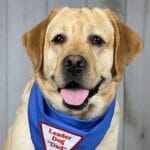
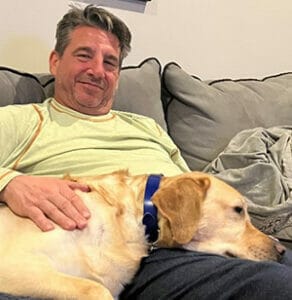
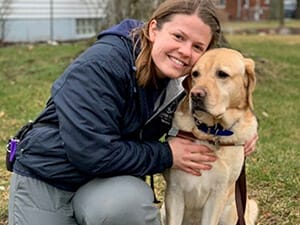
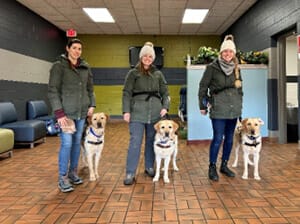
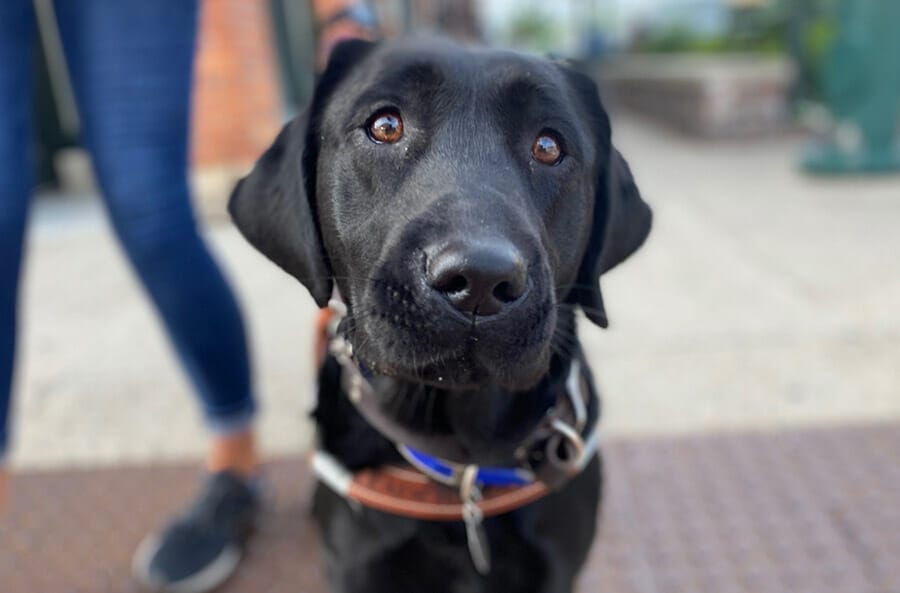
 Myth #2: Guide dogs are always “on duty.” Truth: Guide dogs are definitely trained to work when they’re in harness with their handlers, but they also need time to relax and play. When they’re not working, Leader Dogs are just dogs—running around, playing and snuggling with their people.
Myth #2: Guide dogs are always “on duty.” Truth: Guide dogs are definitely trained to work when they’re in harness with their handlers, but they also need time to relax and play. When they’re not working, Leader Dogs are just dogs—running around, playing and snuggling with their people.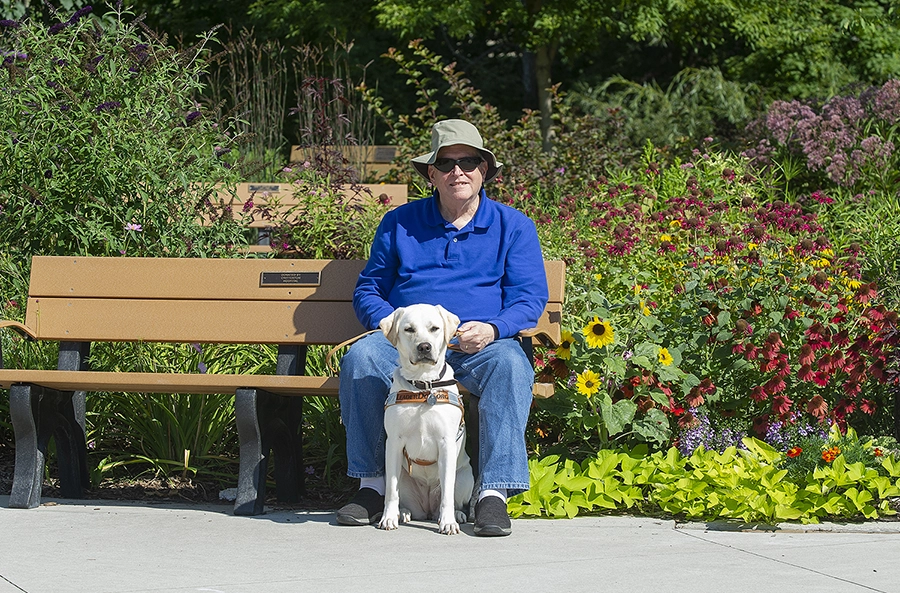
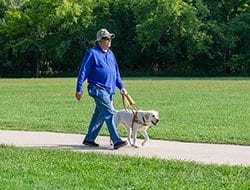 I just completed my journey for my third dog, Izzy, with instructor Linda. She helped me to appreciate the giftedness of Leader Dogs and the commitment of the instructors role in preparing these dogs for us, as clients. Izzy too is very energetic, curious and well disciplined in her work. She was a perfect match (nice job matching me with Izzy, Linda).
I just completed my journey for my third dog, Izzy, with instructor Linda. She helped me to appreciate the giftedness of Leader Dogs and the commitment of the instructors role in preparing these dogs for us, as clients. Izzy too is very energetic, curious and well disciplined in her work. She was a perfect match (nice job matching me with Izzy, Linda).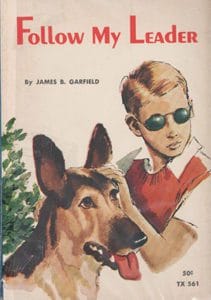 One of my favorite books as a little girl was a children’s novel called
One of my favorite books as a little girl was a children’s novel called  I first started losing my vision at about age 12 or 13. After a lot of tests, the doctors determined that I had a genetic condition called fibrous dysplasia. I had an overgrowth of bone in my skull that was gradually squeezing my optic nerves and taking my vision. Over the next few years, I had three big surgeries to decompress the nerves and save as much vision as possible. When I stopped growing, the bone stopped growing, and my condition stabilized. I was left with total blindness in my left eye. But in my right eye I had tunnel vision like looking through a keyhole. I also had some peripheral/side vision scattered around that was very helpful. Although I would have qualified as legally blind by today’s guidelines, my doctor and my parents encouraged me to participate in every aspect of normal sighted life as possible. I am thankful for all the vision that was saved, and for the wisdom and support of my parents.
I first started losing my vision at about age 12 or 13. After a lot of tests, the doctors determined that I had a genetic condition called fibrous dysplasia. I had an overgrowth of bone in my skull that was gradually squeezing my optic nerves and taking my vision. Over the next few years, I had three big surgeries to decompress the nerves and save as much vision as possible. When I stopped growing, the bone stopped growing, and my condition stabilized. I was left with total blindness in my left eye. But in my right eye I had tunnel vision like looking through a keyhole. I also had some peripheral/side vision scattered around that was very helpful. Although I would have qualified as legally blind by today’s guidelines, my doctor and my parents encouraged me to participate in every aspect of normal sighted life as possible. I am thankful for all the vision that was saved, and for the wisdom and support of my parents.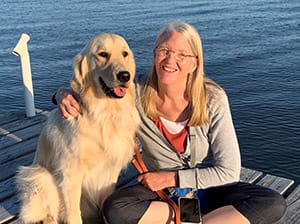
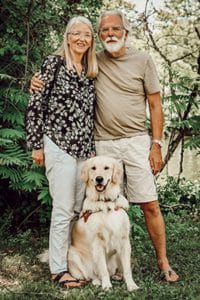 Just between you and me, it has not been easy. There are lots of things I simply cannot do, and lots of things that require inordinate effort and extra time. But I keep trying and am satisfied with less than perfect results. I no doubt would have been a better occupational therapist if I had normal vision. But my kind coworkers stood in the gap for things I couldn’t do, and I focused on getting really good at the things I could do. I have always had trouble recognizing people by sight, but I learned to cheerfully greet everyone I met just in case. I think this made me a more cheerful and outgoing person than I would otherwise have been. I cannot drive a car, but I have friends who offer to pick me up for events, online shopping, and a wonderful husband who will take me anywhere.
Just between you and me, it has not been easy. There are lots of things I simply cannot do, and lots of things that require inordinate effort and extra time. But I keep trying and am satisfied with less than perfect results. I no doubt would have been a better occupational therapist if I had normal vision. But my kind coworkers stood in the gap for things I couldn’t do, and I focused on getting really good at the things I could do. I have always had trouble recognizing people by sight, but I learned to cheerfully greet everyone I met just in case. I think this made me a more cheerful and outgoing person than I would otherwise have been. I cannot drive a car, but I have friends who offer to pick me up for events, online shopping, and a wonderful husband who will take me anywhere.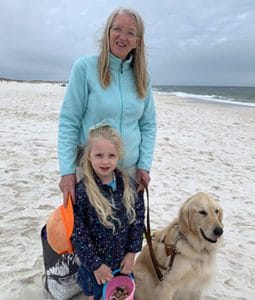 As I get older, I am more aware of the challenges that others face. We all have struggles and disappointment, victories and joy. Within our relationships, we can provide one another with the love, encouragement, and support that makes all the difference.
As I get older, I am more aware of the challenges that others face. We all have struggles and disappointment, victories and joy. Within our relationships, we can provide one another with the love, encouragement, and support that makes all the difference.
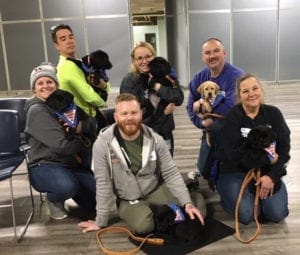 Then it was puppy development’s turn to let guide dog mobility instructors (GDMIs) experience what it’s like to train a very young puppy. During the education session, each instructor got a puppy along with tools that are given to our volunteer puppy raisers (leash, bandanna, toys, treat bag, kibble). The instructors worked on the same skills our puppy raisers start with when training their young Future Leader Dog: putting on the bandanna, settling on a mat, stepping up on a paw pad and basic exercises such as handling paws; looking at teeth, ears and eyes; brushing, and trimming nails.
Then it was puppy development’s turn to let guide dog mobility instructors (GDMIs) experience what it’s like to train a very young puppy. During the education session, each instructor got a puppy along with tools that are given to our volunteer puppy raisers (leash, bandanna, toys, treat bag, kibble). The instructors worked on the same skills our puppy raisers start with when training their young Future Leader Dog: putting on the bandanna, settling on a mat, stepping up on a paw pad and basic exercises such as handling paws; looking at teeth, ears and eyes; brushing, and trimming nails. In playing the part of the puppy raiser, many of the instructors gave “their” puppy a name during the session. They found out that while puppies are a lot of fun, they are also a lot of work. The plan is to allow all the instructor teams to participate in puppy training so that every member of both teams can learn what we do to nurture successful Leader Dogs from puppyhood to partnership with a client!
In playing the part of the puppy raiser, many of the instructors gave “their” puppy a name during the session. They found out that while puppies are a lot of fun, they are also a lot of work. The plan is to allow all the instructor teams to participate in puppy training so that every member of both teams can learn what we do to nurture successful Leader Dogs from puppyhood to partnership with a client!